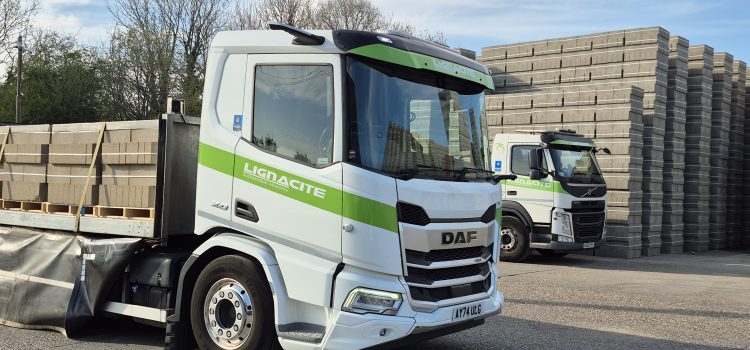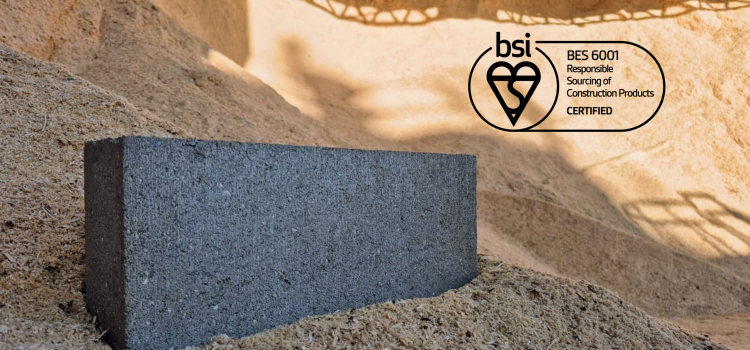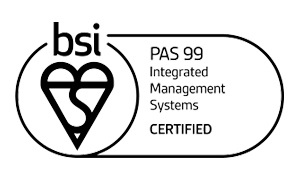Articles
What is sustainable construction and why does it matter?

Posted by Tony Southgate
As concerns about climate change, resource depletion and environmental degradation grow, there is a pressing need to rethink how we design, construct and manage our built environments.
Sustainable construction is a response to these challenges, aiming to minimise the negative environmental impact of buildings and infrastructure while promoting the long-term well-being of occupants and communities. But what exactly does sustainable construction involve and why is it so important?
What is sustainable construction?
To kick off, it’s important to note that there is no universal definition of ‘sustainable construction’. However, a widely referenced 1987 UN report states that sustainability in construction refers to ‘meeting the needs of the present without compromising the ability of future generations to meet their own needs.’
In general, this is distilled into three pillars of sustainability: environmental, social and economic sustainability. By addressing each of these areas during design, construction and beyond, green construction projects have the potential to be sustainable throughout their lifespans.
As Chief Seattle wisely said, 'We do not inherit the Earth from our ancestors; we borrow it from our children.' This perspective underscores the importance of sustainable construction as we work to create a built environment that preserves resources and opportunities for future generations.
Environmental sustainability
Environmental sustainability aims to reduce the effect a building has on the natural world. This could involve anything from selecting materials with low environmental impact to designing systems that conserve water and energy.
Effective waste management during construction is also essential, as is ensuring that the building's operation minimises fossil fuel use by incorporating renewable energy sources wherever possible. In short, it’s about lowering the building’s ecological footprint, with particular attention to reducing carbon emissions and promoting energy efficiency.
Social sustainability
Social sustainability refers to how a building enhances the well-being of its occupants and the wider community. This entails creating spaces that are not only functional but also improve quality of life.
For instance, providing green spaces, designing healthy indoor environments with proper insulation and ventilation and ensuring the building is accessible to all.
Beyond the physical structure, the building should foster a sense of community and promote social cohesion.
Put simply, social sustainability means ensuring that the building benefits everyone who interacts with it, both now and in the future.
Economic sustainability
Economic sustainability in construction relates to the finances involved not just in the initial design and construction phases but the long-term costs. For instance, maintenance costs and the durability of the materials throughout the project’s lifecycle. In the long run, this helps minimise maintenance and repair costs, resulting in economic benefits.
Moreover, energy-efficient buildings tend to reduce utility expenses for occupants. The focus is on achieving cost-effectiveness across the building's entire lifecycle, not just at the point of construction.
Why is it important to the construction industry?
The United Nations estimates that construction accounts for 39% of global carbon emissions. When embodied carbon is taken into account – encompassing the CO2 emitted during the extraction, production, transportation, construction, maintenance and eventual disposal of building materials – construction emerges as one of the world’s most significant sources of pollution. These emissions span from the initial extraction of raw materials to their final transportation to construction sites. The energy consumed throughout these processes has a lasting impact
In addition, according to the Green Building Council’s Building the Case for Net Zero report, around 30% of the UK’s emissions come from completed buildings. This is mainly generated by heating, cooling and electricity use.
These figures highlight the need for the construction industry to rethink how it designs, builds and maintains structures – ensuring energy efficiency and carbon emissions are at the heart of both new projects and existing buildings.
Although achieving total sustainability in construction is challenging – given that resource use is inevitable – significant progress can be made. By embracing innovation, improving resource efficiency and adopting more responsible practices, a sustainable construction industry can play a leading role in reducing its environmental footprint and building a more sustainable future.
The principles of sustainable construction
When it comes to sustainable construction, there are seven principles that are widely recognised. These principles are essential for minimising the environmental impact of buildings and promoting long-term sustainability.
Sustainable design
Sustainable design ensures that buildings minimise their environmental effects, from cradle to grave. These buildings should meet the needs of today’s users without compromising the ability of future generations to meet theirs.
Durability
The principle of durability emphasises the use of strong, long-lasting materials that reduce the need for frequent repairs or demolition. This extends the building's lifespan, contributing to sustainability socially, economically and environmentally. Durability also involves considering maintenance and adaptability to ensure that buildings remain functional over time.
Energy efficiency
Energy efficiency in sustainable construction has two key elements. First, it considers the energy efficiency of the construction process, including the energy used to produce and transport building materials. Second, it focuses on the efficiency of the completed building, such as incorporating solar panels for renewable energy and thermal insulation investments to prevent energy waste. Passive design strategies, like building orientation and natural ventilation, can also boost energy efficiency, reducing operational costs.
Waste reduction
This principle aims to reduce waste produced during construction by supporting a circular economy. By recycling materials as much as possible and designing for disassembly, waste sent to landfill may be reduced. As a result, fewer natural resources are extracted to produce new materials. This approach not only lessens environmental impact but conserves valuable resources.
Indoor air quality
Ensuring healthy indoor air quality is a core principle of sustainable construction. As the climate changes, there will be increased dependency on heating and air conditioning to maintain comfortable indoor environments. However, careful design and construction can reduce or eliminate this dependency. The use of non-toxic, low-emission materials and proper ventilation systems also plays a crucial role in maintaining a healthy indoor atmosphere.
Water conservation
Water is a natural resource used in construction. Sustainable projects aim to limit water usage during construction and throughout the building's life. Techniques such as using recycled and reclaimed water in material production can be used. The incorporation of water-saving features, such as rainwater harvesting and greywater recycling, in the finished structure helps to improve water efficiency, which also has a positive impact on ongoing costs.
Sustainable building materials
A key principle of sustainable construction is the selection of materials and resources used in the building. Sustainable materials may be made from recycled components, be locally sourced or renewable. Understanding and managing material supply chains is crucial to ensure that components are sourced sustainably and ethically. Here at Lignacite, we use certified recycled materials in many of our product ranges, not least in our flagship Lignacite blocks, which containrecycled wood, ash and sand.
The challenges of sustainable construction
While many project owners, architects and developers have sustainability goals, it presents a number of challenges.
From the outset, extensive planning is required to ensure that sustainability is integrated at every stage of a building’s life. This makes the process more complex and time-consuming, often leading to higher upfront costs. Sourcing certified sustainable materials, managing waste responsibly and ensuring ongoing sustainability can further increase project expenses. This may be daunting for owners, especially when budgets are tight.
In addition, construction firms must consider their own sustainability practices and whether they genuinely implement what they promote. While sustainable construction standards like BREEAM (Building Research Establishment Environmental Assessment Method) apply specifically to individual buildings or projects, a firm’s reputation for consistently delivering BREEAM-certified projects can enhance its credibility and demonstrate a strong commitment to sustainability.
Measuring the carbon footprint of a building, particularly in terms of embodied carbon, is another significant challenge. Accurate lifecycle assessment research requires considering the production of materials, from extraction to disposal, which can be complex and data-intensive.
The wider landscape also introduces challenges. Managing the transparency of material supply chains can be difficult, especially when components are sourced from various markets. Ensuring that recycled materials are suitable for the intended project adds another layer of complexity.
While regulation in sustainable construction is currently limited, efforts are being made to improve standards and guidelines. Growing interest and experience in sustainable construction are also making it more accessible. As more firms adopt sustainable practices, navigating these challenges is becoming easier. Additionally, a new generation of professionals is eager to incorporate Environmental, Social, and Governance (ESG) principles into their projects, driving further innovation in the field.
The cost of sustainable construction
There is a strongly held belief that sustainable construction costs more than standard construction. However, new data and sustainable construction examples are beginning to show that this needn’t be the case. In fact, a project in Washington DC, which went on to become LEED-Platinum certified, came in 17% under budget.
The Green Building Council has also conducted independent research in real-life projects and found that the cost uplift for intermediate climate scenarios (referring to buildings that are, or will soon be, in design) was 6.2% for offices and 3.5% for residential buildings.
However, the report goes on to suggest that these costs can be recovered from the value that sustainable construction provides. For instance, statistics show that so-called ‘green buildings’ cost 14% less to run than other buildings, due to use of renewable energy, efficient ventilation and insulation. And because the buildings are more durable, the cost for repairs is limited.
And that’s in addition to demand for sustainable buildings, which means the average green building is worth 7 percent more than its traditional counterpart.
The value of sustainable construction
The development of a sustainable building sector offers value on several levels.
From a social perspective, sustainable construction projects create buildings that people want to live, work and relax in, thanks to enhanced comfort, better indoor air quality, and overall improved living conditions. These factors contribute to the desirability of such buildings.
Economically, sustainable buildings are often less expensive to operate due to lower energy usage and maintenance costs. Their increased desirability can also boost long-term financial value, making them sound investments in a competitive real estate market.
Green construction has several environmental benefits and plays a critical role in reducing the sector's impact by minimising waste and lowering carbon emissions.
Why is sustainability important in construction?
The construction sector is one of the largest sources of carbon emissions and resource consumption. As such, it is essential to adopt sustainable construction methods to mitigate these effects. By reducing waste, conserving resources and lowering emissions, sustainable construction contributes significantly to environmental preservation and helps address the pressing issue of climate change.
Economically, sustainable construction is a smart investment. Buildings designed with sustainability in mind often have lower operating costs due to energy efficiency and reduced maintenance needs. This not only makes them more attractive to buyers and tenants but enhances their long-term value.
Sustainable buildings contribute to healthier and more comfortable living and working environments. They prioritise the well-being of occupants, leading to spaces that people are drawn to, improving overall quality of life.
Ultimately, sustainability in construction is about building for the future. It ensures that the structures we create today will be environmentally responsible, economically sound and socially beneficial for generations to come.
Find out more about Lignacite's sustainable masonry products
Our range of concrete blocks uses recycled materials from certified sources. We also take our own responsibilities seriously and continually seek ways to reduce our impact on the environment. To find out more, take a look at our Sustainability section, or give our Quoting team a call on 01842 778485.






















